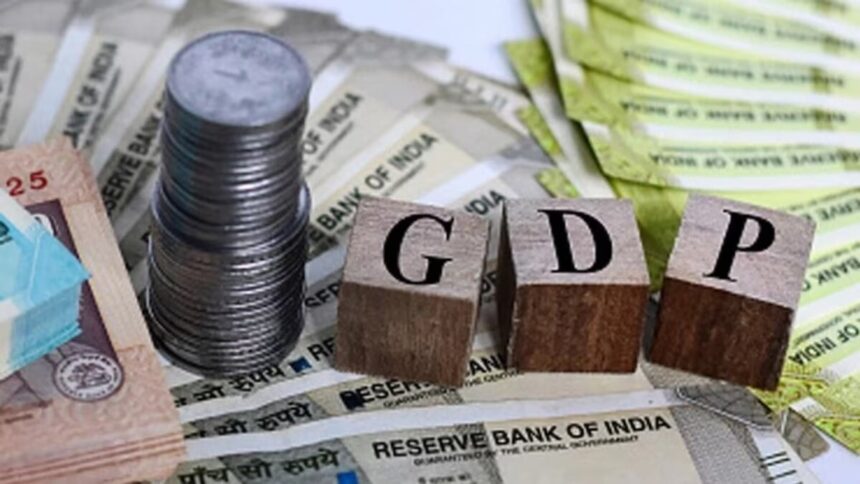FICCI’s latest Economic Outlook Survey forecasts India’s GDP growth for 2024-25 at a median forecast of 6.4%, down slightly from the 7.0% estimated in the survey previous one conducted in September 2024. This forecast reflects a notable slowdown from 8.2%. growth achieved in 2023-24. These projections are consistent with general expectations, indicating a moderation in economic activity.
The agriculture sector, including allied activities, is expected to grow by 3.6% in 2024-25. Meanwhile, the industrial and service sectors are expected to grow by 6.3% and 7.3%, respectively. Economic activity is expected to pick up in the second half of the fiscal year, supported by increased public capital expenditure, festive demand and normalization of industrial activity post-monsoon.
Conducted in December 2024, the FICCI survey gathered opinions from leading economists in industry, banking and financial services. The median inflation forecast based on the Consumer Price Index (CPI) for 2024-25 is 4.8%, in line with the Reserve Bank of India’s projections for the year.
Outlook for India
For India, economists expressed cautious optimism given external headwinds. Consumer spending is expected to recover, driven by improvements in the agricultural sector which are expected to boost rural consumption. Food inflation, which has strained household budgets, is expected to ease, while the RBI’s monetary easing, likely to reduce interest rates, could further boost consumption.
On the investment front, the government’s continued focus on capital spending is seen as a key driver of growth. Infrastructure investments, particularly in roads, housing, logistics and railways, are expected to maintain momentum through 2025-2026. However, there are concerns that private sector investment will remain weak, with the cautious outlook deterring large-scale capacity expansions. Geopolitical uncertainties and uneven domestic demand, combined with oversupply from China, have made investors cautious, although a rebound in demand, along with improving corporate balance sheets, could boost growth. private investment.
Economists say the potential impact of Donald Trump’s policies could cause short-term disruptions, including to exports, foreign capital flows and input costs. U.S. tax cuts could balloon the budget deficit, while higher tariffs and stricter immigration policies could drive up costs.
A reduction in US interest rates, less aggressive than expected, could lead to a reduction in capital inflows to emerging markets like India, potentially causing fluctuations in the rupee. Trade tensions, particularly between the United States and China, could also disrupt global supply chains and increase input costs in the near term. However, economists say the United States could take a more measured approach towards India.
On the positive side, India stands to benefit from changes in global supply chains, particularly in electronics and pharmaceutical manufacturing. The Indian pharmaceutical industry is well positioned to benefit from disruptions in global supply chains, particularly in the area of generics and active pharmaceutical ingredients. The country’s role as a manufacturing hub for sectors such as semiconductors, electronics and automotive components could attract foreign direct investment, notably through targeted industrial policies.
Economists recommend that India focus on reducing tariffs on some U.S. imports, diversify export markets and strengthen collaboration in emerging areas such as artificial intelligence, clean energy and cybersecurity.
Focus on the Union budget
As India prepares for the Union Budget for 2025-26, due on February 1, 2025, economists have highlighted key areas where policies need to focus. Reviving private consumption is a priority, with recommendations for a review of the current tax structure to improve disposable income and boost spending. Continued investments in social programs like MGNREGA, PMGSY and PMAY are also suggested. Economists expect capital expenditure to increase by 10-15% in the next budget, given its strong multiplier effects.
Other recommendations include increasing agricultural productivity, improving rural infrastructure and strengthening agricultural value chains. Investments in cold storage facilities and supply chain efficiencies are key to managing inflationary pressures and minimizing food waste. The manufacturing sector is expected to continue to receive attention, and reforms in the land, labor and financial sectors are needed to improve the ease of doing business. Policy certainty and regular assessments of regulations are also essential to support growth.
Finally, as India’s export prospects come under scrutiny, economists are calling for continued support for exporters, including extending the interest equalization system and increasing marketing support allocations.
Global growth
Looking ahead to 2025, economists expect global growth to maintain a positive trajectory, tempered by caution. Falling prices and easing monetary policy in key economies, along with strong growth in interest-rate-sensitive sectors and a continued recovery in services, are expected to support global growth. Technological advances, particularly in semiconductors, electronics and artificial intelligence, as well as a focus on green energy transitions, are likely to boost investment.
However, significant risks persist. Rising geopolitical tensions and trade policy uncertainties, such as the potential fragmentation of global trade, could hamper growth. Political changes in the United States are also a factor to watch, with potential impacts on trade relations and economic conditions. Additionally, the ongoing conflict in the Middle East remains a potential risk for energy markets.
Challenges related to high levels of public debt, climate-induced disruptions, and the vulnerability of agriculture- and commodity-dependent economies add further complexity to the global outlook.









